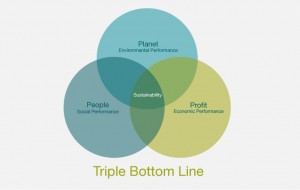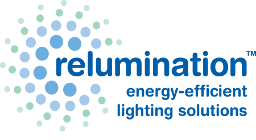 As you are no doubt aware, EISA, the 2007 Energy Independence And Security Act means that traditional incandescent light bulbs will no longer meet energy efficiency standards, with even 40 watt bulbs being phased out in January 2014. Despite somewhat vocal grumbling from certain quarters, this actually represents a great opportunity for businesses to improve their triple bottom line of profit, people and planet through the use of LED Lighting.
As you are no doubt aware, EISA, the 2007 Energy Independence And Security Act means that traditional incandescent light bulbs will no longer meet energy efficiency standards, with even 40 watt bulbs being phased out in January 2014. Despite somewhat vocal grumbling from certain quarters, this actually represents a great opportunity for businesses to improve their triple bottom line of profit, people and planet through the use of LED Lighting.
First – profit. LED lighting can reduce energy consumption by up to 90%, which considering energy costs can have a significant impact on your bills and improve cash flow. Benjamin Franklin famously once said that “A penny saved is a penny earned”, but even such an innovator as he would no doubt be impressed by a technology that improved on his dictum 90 fold. Not only are LED lights incredibly efficient, but with an average lifespan of 50,000 hours or more, an LED bulb will outlive 50 of its’ incandescent cousins, which equates to a significant cost saving over the lifetime of the bulb, not to mention the labor costs involved in “Relamping” the same fixture 50 times.
Second – people. When used in an office environment, LED lights provide even, consistent illumination without the flicker associated with traditional fluorescent tubes that can result in eyestrain or headaches for employees, which means an increase in productivity, employee health, happiness and general well being. LED light is also free from both Ultraviolet and Infra-red emissions, both of which are harmful not only to people, but can also damage equipment over time and cause fading of fabrics and surface finishes. Their instant start up means that flicking a switch provides complete lighting of any area without any slow start up or flickering, an important security consideration in sensitive or areas that are illuminated infrequently.
Third – planet. LED lights are environmentally friendly as their much lower energy needs means less power generation simply for light and therefore a reduction in fossil fuel use and greenhouse gas emissions. They contain no harmful materials such as the mercury found in compact fluorescent bulbs, many of which still end up in landfill sites. They contain no glass, which means that they can be used in areas prone to constant vibration or temperature fluctuation, or in areas used for food preparation, handling and storage. They are also free of any gasses or filaments, another contamination source associated with incandescent and fluorescent bulbs.
These may seem rather ambitious claims for so small and apparently humble an item as a light bulb, but as is often the case, the devil is in the details. Who would ever have thought that in all the business decisions one can make that something as simple as changing a light bulb could have such significance?
For more information on how LED lighting can improve your business, contact us
